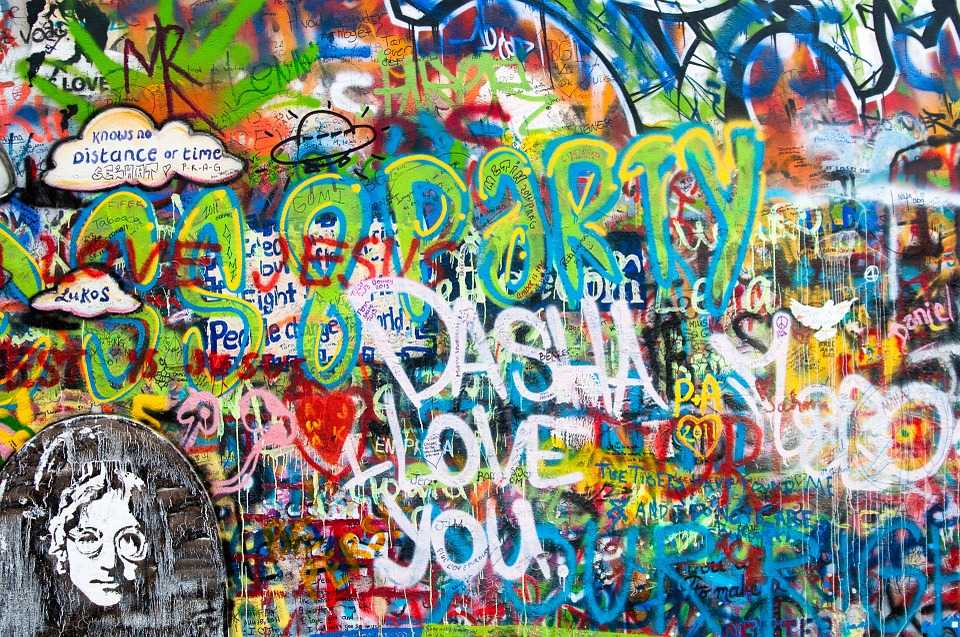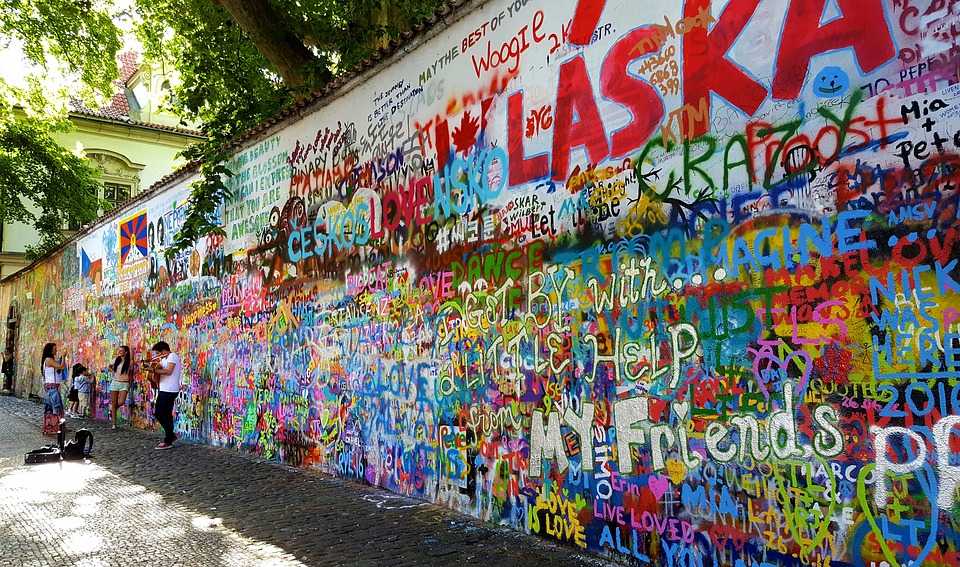John Lennon Wall, Prague
John Lennon Wall, Prague, Prague Overview
The Lennon Wall, located in Prague's Lesser Town (Mala Strana) near Kampa Park, is one of the city's most unique and symbolic landmarks. This colorful wall, covered in layers of graffiti, lyrics, and messages of peace, is a tribute to John Lennon, the legendary Beatles singer, and has become a symbol of freedom, love, and nonviolent resistance. Due to its evolving nature, the wall may look different from one visit to the next. The site often has a lively atmosphere with street performers, musicians, and groups of tourists.
The wall gained fame during the 1980s under the communist regime of Czechoslovakia. After John Lennon’s death in 1980, it became a space where people expressed their opposition to the regime, writing messages of hope, peace, and freedom, often inspired by Lennon’s lyrics. Despite repeated attempts by authorities to whitewash the wall, messages would reappear overnight, making it a symbol of the youth rebellion and the fight for free speech.
Read More on John Lennon Wall, Prague
History of the John Lennon Wall

The situation of Prague in the 19th century had grown overtly volatile - no European symbols were allowed or sanctioned under the Communist regime. This led to the ban of many iconic European celebrities who claimed liberal politics. Citizens were prohibited from listening to John Lenon’s music and even curtailed from indulging in any western pop music; any such act punishable by imprisonment. This blatant refusal of authority as well as vandalizing of public property through graffiti was the subject of many thwarting attempts by the government. Security cameras were installed near the wall, the wall was continuously whitewashed, police personnel were increased and surveillance was at an all time high to ensure that this political movement was brought to an end.
These actions infuriated the Czech authorities, and these back and forth attacks led to a clash between students and authorities on the nearby Charles Bridge. Students named their uprising and revolt “Lennonism”, which was disregarded by the Czech government who described these students as mentally deranged. In spite of these efforts, the rebellious youth found ways to avoid getting imprisoned while simultaneously graffiti-ng messages on the John Lenon Wall to further the movement.
John Lennon Wall in Modern Day

Today, the Lennon Wall is a representation of ideas such as freedom and peace. The Sovereign Military Order of Malta owns the wall and allowed the graffiti to continue on the wall. Inspired by the wall and the events attached to it, a similar wall was seen in Hong Kong, on the offices of the central government, during the 2014 Hong Kong Protests. The wall was used to post notes and write messages containing the democratic wishes of Hong Kong citizens.
On the 25th anniversary of the Velvet Revolution of 1989 which led to the fall of the Communist Government of Czech Republic, the entire wall was painted white and only the text “Wall is over” remained. This text was later changed to “War is over”. In April 2019, to mark Earth Day, the wall was painted and graffitied with slogans related to climate change and general awareness about saving the environment.
How To Reach John Lennon Wall, Prague
The nearest tram stops to Velkoprevorsky namesti are either Malostranske namesti or Hellichova.
